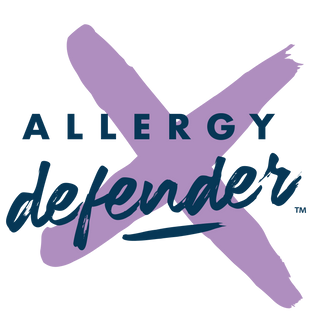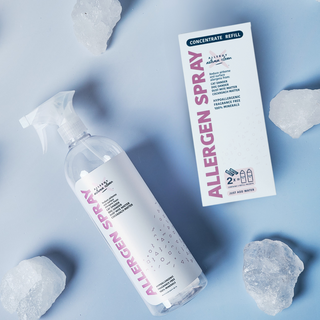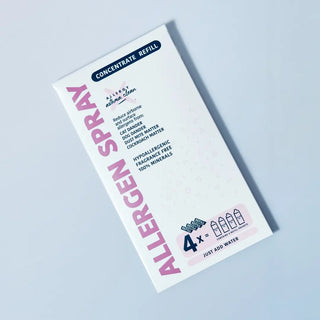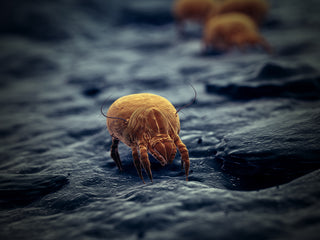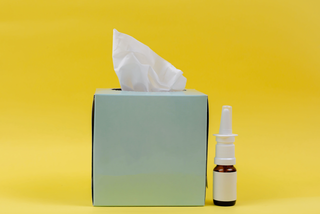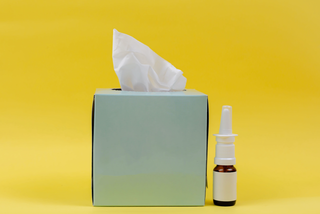Herbal Remedy Hay Fever: Natural Solutions for Seasonal Allergy Relief
Every year, millions of people reach for antihistamines as trees begin releasing their pollen payload. From March through September, sneezing, nasal congestion, and itchy eyes affects countless individuals who experience this familiar cycle. While regular medications provide some relief, many people seek a herbal remedy for hayfever solutions to avoid common side effects like drowsiness, dry mouth, and dependency concerns.
Natural remedies for hayfever offer an interesting alternative because they work through multiple mechanisms to reduce inflammation, stabilize immune responses, and provide symptom relief. Unlike antihistamines that primarily block histamine receptors, herbal approaches target the underlying allergic response at various stages, often with fewer side effects.
This comprehensive guide examines the most effective herbal remedies for seasonal allergies, supported by both scientific research and traditional use. You’ll discover practical dosing protocols, safety considerations, and how to combine natural treatments with lifestyle modifications for real relief during allergy season.
Understanding Hay Fever and Natural Treatment Options
Hay fever affects many people during pollen season, with different allergens triggering symptoms throughout the year. Tree pollen dominates early spring, followed by grass pollen in summer, while weed pollen extends the allergy season until late autumn. This seasonal progression means many sufferers experience prolonged periods of nasal symptoms and allergic reactions. Ugh, right?
The body produces an exaggerated immune system response when exposed to these harmless pollen particles. During this allergic response, mast cells release histamine leading to the characteristic hay fever symptoms: runny nose, nasal congestion, itchy eyes, and general upper respiratory distress.
Herbal remedies offer effective alternatives to antihistamines without drowsiness by targeting multiple pathways. Natural treatments work by reducing inflammation and stabilizing immune responses, often providing relief comparable to conventional allergy treatment while supporting overall health. Many herbs demonstrate anti-inflammatory properties that address not just immediate symptoms but also help modulate the underlying allergic reactions.
The appeal of natural remedy options extends beyond avoiding side effects. Many people find that herbal approaches provide more sustained relief and can be safely used throughout the extended pollen season without the tolerance issues sometimes seen with drugs.
Top Herbal Remedy Hay Fever Relief
Quercetin: Nature’s Antihistamine
Quercetin stands out as one of the most researched natural compounds for allergic rhinitis. Found naturally in onions, berries, citrus fruits, and red wine, this flavonoid acts as a natural antihistamine by stabilizing mast cells to prevent histamine release. Research shows quercetin works similarly to the pharmaceutical drug cromolyn sodium, making it an excellent foundation for natural allergy treatment.
The optimal dosing protocol involves taking 200-400mg three times daily during allergy season. For maximum effectiveness, start supplementation 4-6 weeks before pollen season begins, allowing the compound to build up in your system. This approach helps reduce allergy symptoms before they become a problem.
Quercetin’s effectiveness increases significantly when combined with vitamin C. Vitamin C enhances quercetin absorption while providing additional natural antihistamine properties. This combo approach often proves more effective than either supplement alone.
While generally safe for most adults, high doses may cause mild gastrointestinal upset in sensitive individuals. Starting with lower doses and gradually increasing allows you to assess tolerance while building to the level your body needs.
Butterbur Extract for Nasal Symptoms and Itchy Eyes
Clinical studies consistently demonstrate butterbur’s impressive effectiveness for seasonal allergic symptoms. Research, including six small clinical trials and reviews, show butterbur extract can match the effectiveness of pharmaceutical antihistamines like cetirizine for nasal symptoms, including congestion, sneezing, and itchy eyes.
Butterbur has special natural chemicals called petasin and isopetasin. These chemicals help stop the body from making something called leukotrienes, which can cause stuffy noses and breathing problems. This works in a different way than regular allergy medicine, so butterbur can help more with nose and breathing symptoms that other medicines might not fix completely.
Critical safety note: Use only PA-free (pyrrolizidine alkaloid-free) standardized extracts, as raw butterbur contains compounds linked to liver damage. Honest manufacturers clearly label their products as “PA-free” to ensure safety. The typical dosage ranges from 50 to 75 mg twice daily during peak allergy periods.
Long-term safety data beyond several months remains limited, so intermittent use during hayfever season is recommended rather than year-round supplementing.
Stinging Nettle for Inflammatory Response
Stinging nettle is a plant that works like a natural allergy medicine. It helps stop allergic reactions by calming down certain cells in the body that cause sneezing, itching, and swelling. Freeze-dried nettle leaves can also block spots in the body where histamine (a chemical that causes allergies) tries to work, which helps reduce allergy symptoms.
The standard protocol involves taking 300mg capsules every 2-4 hours as needed during symptom flares. As an alternative, nettle tea offers a gentler approach: steep 1-2 teaspoons of dried leaves in hot water for 10-15 minutes. Many people find nettle tea particularly soothing.
Stinging nettle works by blocking histamine receptors naturally while supporting healthy immune function. Unlike over-the-counter antihistamines that can cause drowsiness, nettle typically provides clear-headed relief. The herb is generally safe, but it can increase the necessity to pee more frequently as reported in most users.
Many practitioners recommend starting nettle supplementation at the first sign of seasonal allergies rather than waiting for symptoms to become severe.
Black Cumin Seed Oil for Respiratory Relief
Black cumin seed oil, which comes from a plant called Nigella sativa, helps with breathing problems. It has a special ingredient called thymoquinone that reduces swelling and helps open up the airways, making it easier to breathe. Preliminary clinical trials indicate black seed oil can reduce nasal congestion and a runny nose within six weeks of consistent use.
The oil is available in a number of delivery forms: capsules, nasal drops for direct application, or topical chest application (add another oil to the black cumin see oil as it may irritate the skin) for respiratory support. Use 1-2 capsules daily or apply 2-3 drops in each nostril for targeted nasal symptom relief.
Clinical studies report minimal or no significant side effects, making black cumin oil generally safe for most adults. The oil works by inhibiting histamine production and reduces cell signals that drive allergic inflammation.
Black cumin seed oil pairs well with other herbal remedies and can be safely combined with conventional allergy treatment when needed. Its gentle nature makes it suitable for sensitive individuals who may not tolerate stronger meds or supplements.
Supporting Herbs and Natural Compounds
Local Honey for Pollen Desensitization
Local honey contains trace amounts of regional pollens, which theoretically help desensitize the immune system to local allergens. Take 1-2 tablespoons daily starting 2 months before the allergy season. Choose raw, unprocessed honey from local beekeepers for maximum benefit.
While controlled studies remain limited, many people report reduced seasonal allergies after consistent local honey consumption.
Important safety note: Avoid local honey if you have known allergies to bee products or severe pollen allergies, as it could potentially trigger allergic reactions in highly sensitive individuals. Start with small amounts to assess tolerance.
The key to success with local honey lies in consistency and timing. Begin supplementation well before allergy season to allow gradual immune adaptation. Many users find that combining honey with some herbal teas enhances both palatability and therapeutic benefits.
Turmeric and Curcumin for Inflammation
Curcumin, the active constituent in turmeric, demonstrates powerful anti-inflammatory properties that effectively address the underlying inflammatory pathways driving allergic symptoms. Controlled trials show supplementing with curcumin reduces nasal symptoms in people with seasonal allergies.
Take 500mg curcumin extract daily, preferably combined with black pepper extract (piperine) to boost its availability. Without piperine, curcumin absorption remains poor, limiting it's effectiveness.
Curcumin blocks inflammatory pathways in allergic responses while supporting healthy immune function. The compound can work together with other anti-inflammatory herbs like quercetin, often providing enhanced benefits.
For those who prefer approaches through food, golden milk or turmeric tea offers gentler doses while supporting overall health. Add these preparations to your daily routine throughout allergy season for sustained anti-inflammatory support.
Vitamin C as a Natural Antihistamine
Vitamin C functions as both a potent antioxidant and natural antihistamine, reducing histamine levels while supporting healthy immune function. This dual action makes vitamin C an excellent foundation supplement for any natural allergy protocol.
Take 1000mg daily in divided doses during allergy season for optimal results. Vitamin C is abundant in citrus fruits, berries, and bell peppers, though heavier doses typically require supplementing beyond food sources alone.
The vitamin works well with bioflavonoids like quercetin, enhancing absorption and effectiveness of both compounds. This partnership often yields superior results compared to using either nutrient independently.
Adverse effects from vitamin C remain rare, though excessive intake may cause gastrointestinal discomfort in sensitive individuals. Start with small doses and increase gradually to determine your tolerance.
Herbal Remedy Hay Fever Preparation Methods and Usage
Teas
Herbal teas offer gentle, easily adjustable dosing for hay fever relief, while providing soothing warmth for irritated throats. Nettle leaf tea remains the most popular choice - steep 1-2 teaspoons dried leaves for 10-15 minutes.
Elderflower tea helps reduce upper respiratory inflammation, while green tea provides natural antihistamine compounds. For optimal benefits, drink 2-3 cups daily throughout allergy season, adjusting strength based on individual tolerance and symptom severity.
Adding a spoonful of local honey enhances both palatability and potential therapeutic benefits. The honey provides additional immune support while making herbal teas more enjoyable for daily consumption.
Proper brewing technique matters for symptom effectiveness. Use hot (not boiling) water and cover during steeping to prevent volatile compounds from escaping. Longer steeping times generally extract more active compounds but may increase bitterness (hence the desire for honey!).
Tinctures and Liquid Extracts
Tinctures offer more concentrated doses with faster absorption compared to teas, making them ideal for managing acute symptoms. Eyebright tincture specifically targets symptoms like itching and watering eyes. Goldenseal supports mucus membrane health in the nasal passages and sinuses.
Follow manufacturer dosing guidelines carefully to avoid toxicity, as tinctures contain highly concentrated plant compounds. Most can be diluted in water or taken directly under the tongue for rapid absorption.
Liquid extracts can be flexible in dosing based on symptom severity and individual response. Start with recommended doses and adjust gradually based on effectiveness and tolerance.
Quality varies among tincture manufacturers, so choose standard extracts from reputable suppliers. Look for products that specify extraction ratios and active compound concentrations for consistent relief.
Safety Considerations for Herbal Remedy Hay Fever
All herbal remedies require consultation with a health professional before starting, especially for individuals with complex medical histories or those taking prescription medications. Herb-drug interactions can occur, potentially altering medication effectiveness or causing unexpected side effects.
Allergic cross-reactivity represents a real concern, particularly for individuals with existing plant allergies. Those allergic to ragweed may react to chamomile and related plants, while people with other environmental allergies should introduce herbs cautiously.
Start with lower doses to assess individual tolerance before increasing to therapeutic levels. This approach allows you to identify potential sensitivities while building effective treatment protocols safely.
Pregnant and nursing mothers should avoid certain herbs, notably butterbur and goldenseal, unless specifically directed by a qualified practitioner. Many herbs lack sufficient safety data for these populations, making professional guidance essential.
Key safety protocols:
|
Consideration |
Recommendation |
|---|---|
|
Initial dosing |
Start with 25-50% of the recommended dose |
|
Monitoring period |
Assess tolerance for 3-5 days before increasing |
|
Quality sourcing |
Choose standard extracts from reputable manufacturers |
|
Professional guidance |
Consult healthcare providers for complex cases |
|
Discontinuation |
Stop use immediately if adverse reactions occur |
Always purchase standard extracts from reputable suppliers to guarantee purity and potency. This is particularly critical with products like butterbur, where contamination risks pose serious health concerns.
Combining Herbal Remedies with Lifestyle Changes
Herbal strategies prove most effective when combined with practical lifestyle interventions that minimize exposure to pollen. High-efficiency particulate air purifiers significantly reduce indoor allergen load, creating cleaner air within your home environment.
Simple environmental modifications can significantly enhance the effectiveness of herbal remedies. Keep windows closed during high pollen count days, wash clothes frequently after outdoor exposure, and shower immediately after spending time outside to remove residual pollen from hair and skin.
Apply petroleum jelly around the nostrils to trap pollen particles before they enter the nasal passages. This simple barrier method works best together with internal herbal treatments to reduce overall allergen exposure.
Monitor daily pollen forecasts to plan outdoor activities during lower-count periods when possible.
Lifestyle integration strategies:
-
Use air purifiers with HEPA filtration in bedrooms and main living areas
-
Time for outdoor activities for early morning or evening when pollen levels typically decrease
-
Create “clean zones” in your home where outdoor clothes and shoes are removed
-
Implement nasal irrigation with a saline solution to clear nasal passages of accumulated pollen
-
Consider using a neti pot or squeeze bottle for gentle nasal cleansing
Steam inhalation provides additional respiratory support, especially when combined with herbal treatments. Add a few drops of eucalyptus or peppermint oil to hot water for enhanced decongestant effects.
Regular vacuum cleaner maintenance with HEPA filters helps remove allergens from carpets and upholstery, thereby improving air quality. This approach reduces overall allergen load.
When to Seek Professional Medical Advice
While herbal remedies offer effective relief for many people, certain situations require professional medical evaluation. Symptoms that persist despite consistent herbal treatment may indicate underlying conditions requiring different therapeutic approaches.
Severe reactions like difficulty breathing, facial swelling, or systemic allergic symptoms warrant immediate medical attention. These signs may indicate anaphylaxis or other serious allergic reactions requiring emergency intervention.
Unexpected side effects from herbal remedies should prompt discontinuation and professional consultation. While rare cases occur, individual sensitivities can develop even with generally safe herbs.
Children under 12 require specialized dosing recommendations and professional guidance due to their developing systems and different metabolic patterns. Many adult dosed are inappropriate for children's use.
Seek professional advice when:
-
Symptoms worsen or fail to improve after 2-3 weeks of consistent herbal treatment
-
Breathing difficulties or chest tightness develop
-
Severe fatigue or systemic symptoms emerge
-
Combining herbs with prescription medications
-
Treating allergic asthma alongside seasonal allergies
-
Managing multiple health conditions simultaneously
Consider allergy testing to identify specific triggers, enabling more targeted natural and conventional treatment approaches. Understanding your particular sensitivities helps optimize your herbal remedy selection and environmental avoidance strategies.
Professional guidance becomes particularly valuable when transitioning from conventional allergy shots or medications to natural approaches. This transition requires careful monitoring to ensure symptom control while avoiding rebound reactions.
Herbal Remedy Hay Fever Summary
Herbal remedy approaches offer compelling alternatives to conventional antihistamines, while they support overall health. From quercetin to butterbur, these natural treatments offer effective relief with fewer side effects compared to pharmaceutical options.
The best natural remedies for seasonal allergies work through diverse mechanisms - quercetin acts like a natural antihistamine, stinging nettle blocks histamine receptors, and black cumin oil reduces inflammatory production. When combined with supporting compounds like vitamin C and turmeric, these herbs create comprehensive protocols that address the root causes of hay fever symptoms.
Success with herbal treatments requires patience, consistency, and proper timing. Start supplementation 4-6 weeks before your typical allergy season begins, choose high-quality standard extracts, and combine internal remedies with practical lifestyle modifications for optimal results.
Remember that natural doesn’t automatically mean risk-free. Work with a healthcare professional to develop safe and effective protocols tailored to your specific needs and medical history. With proper guidance and consistent application, herbal remedies can provide the seasonal relief you’re seeking while supporting your body’s natural healing processes.
Begin your natural allergy relief journey by selecting one or two herbs that appeal to you, starting with small doses to assess tolerance. As you build confidence and experience, you can expand it to include complementary herbs and lifestyle modifications for comprehensive management of seasonal allergies.
